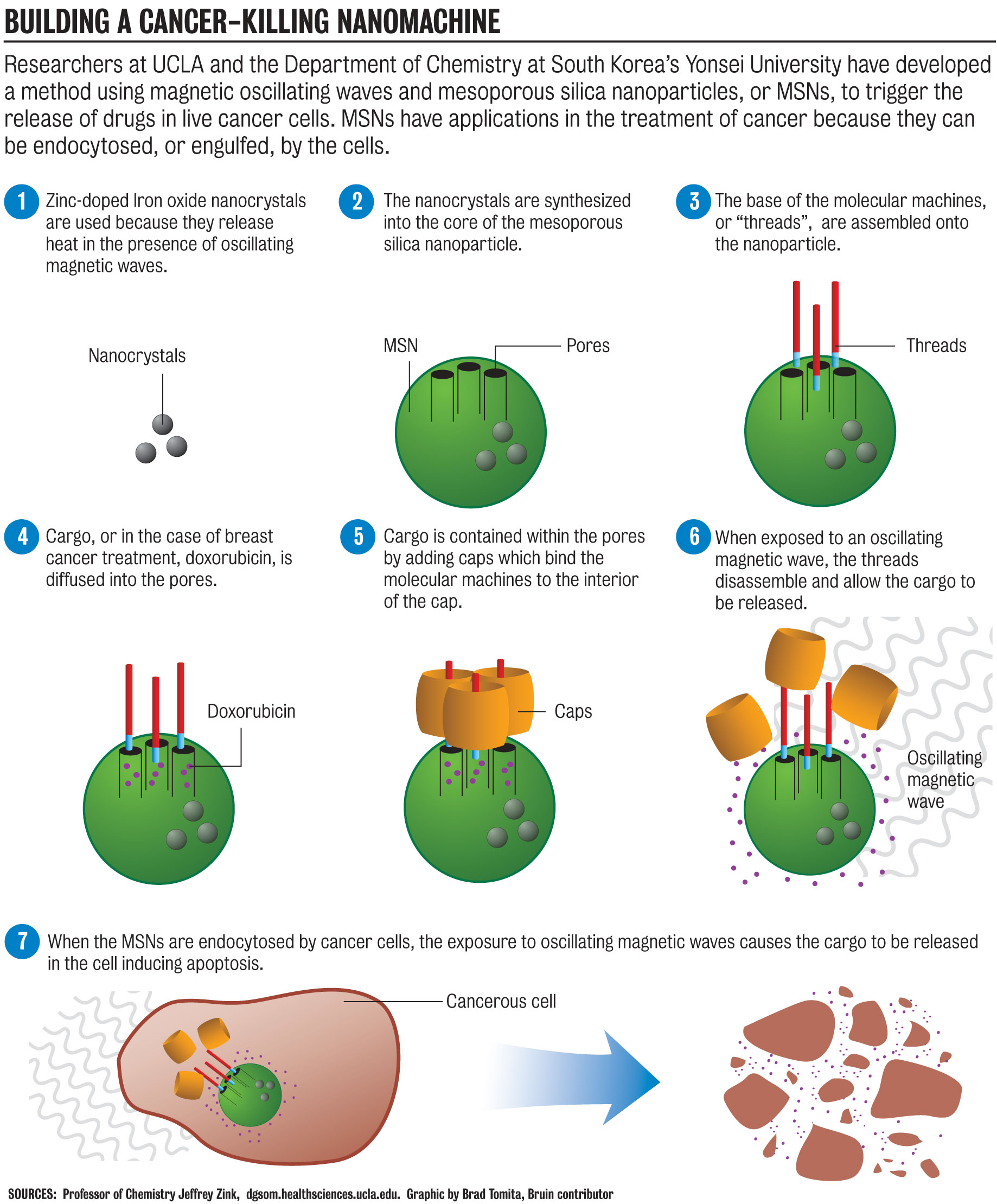Research collaboration with Yonsei University leads to new cancer drug-delivery system

By Shoshee Jau
Aug. 16, 2010 8:54 p.m.
Going into her fourth year in graduate school, organic chemistry student Courtney Thomas regularly communicates across the globe and conducts lab experiments, hoping to one day save lives.
This may not be the picture of your everyday science student, but such is the scene in the laboratory of Dr. Jeffrey Zink, a UCLA chemistry and biochemistry professor. For the past year and a half, graduate student researchers from the Zink Group have collaborated with scientists from South Korea’s Yonsei University to create a novel treatment method for cancer victims.
Though Zink and Dr. Jinwoo Cheon of Yonsei University developed the idea for the project, much of the work has been carried out by graduate students for their doctorate theses, Zink said. In conducting experiments and collecting results, Thomas collaborated with graduate student Daniel Ferris of UCLA and Yonsei University students Jae-Hyun Lee and Eunsook Kim.
“Creative research is what a Ph.D. degree is all about,” Zink said. “We come up with ideas, but it is the students who take those ideas and make them work.”
The drug-release system uses nanotechnology as its main means of treatment, administering drugs directly to cancerous cells without interfering with healthy bodily tissue.
“We took a risk with the realization of a wild idea, making a nanoscale cancer-drug-release system in a remote and noninvasive manner,” said Cheon, who teaches chemistry at Yonsei. For him, one of the greatest challenges lies in the minute scale of the entire project; everything the researchers worked on was in billionths of a meter.
The team’s findings were published in the July issue of the Journal of the American Chemical Society, highlighting a new means of drug delivery through nanovalves. The valves, previously engineered and tested by the Zink Group, took on a new role when the research team discovered a means to operate them remotely in live cells.
By applying a magnetic field to the valves, the team was able to control the timing of drug release into the cancer cells.
“The idea was very unique and had not been done before,” Thomas said. “We all knew going into it that the implications were very strong. The nanoparticles are delivered, but the drugs are not released until we introduce the stimulus.”
The collaborative aspect of the project made the research process unique for student researchers, Lee said. Though they worked in different labs on opposite sides of the globe, the researchers were able to share their findings through e-mail and overseas materials-shipping.
“Each group had its own expertise, which we learned and exchanged by close communication; it was very synergistic,” Lee said.
For Thomas, the interactive nature of the project made each day exciting and filled with different learning experiences. Through working with the California NanoSystems Institute, Thomas said she was able to widen her breadth of knowledge about other sciences.
“This project involved organic chemistry interfaced with other disciplines ““ biology, molecular genetics, material science ““ to see how far we can push, what unique things we can do,” she said.
This liberty allowed to graduate students also brought novel approaches to reaching the project’s objective, Thomas said. In working with Zink, both she and Ferris were able to create their own means of experimenting.
“Research is a dynamic process,” Thomas said. “Everyone starts with an idea and it branches out. We discovered new and exciting things along the way that lent themselves to new experiments that allowed us to learn more about the system.”
Thomas attributes the smooth research process to the strong direction of leadership.
“It was really fun seeing this prove to be successful,” she said. “Everything went smoothly, and it helped so much that we had a defined process for what we wanted to show and a well-defined sense of direction.”
However, the discovery of the system is only the first step, Zink said.
“We first showed that the whole system worked in the test tube, which was just simple chemistry,” he said. “Then we showed that it also worked inside of cancer cells, which is called in vitro. Next we will show that it works in vivo, in living creatures, and ultimately, in humans.”
Though a significant portion of their time is spent in the laboratory, student researchers view each day as another step in developing an impactful and innovative technology, Thomas said.
“When research gets difficult, I remember the bigger picture, that we are delivering drugs and saving lives,” she said.


